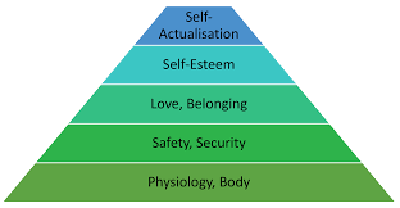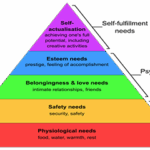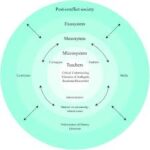Also known as: Motivational leadership, inspirational leadership
Motivating leadership refers to leadership behavior specifically aimed at increasing or maintaining the achievement motivation of employees (→ motivation). It involves using targeted leadership styles and strategies to align with employees’ needs, abilities, and motivational structures—enhancing both their individual performance and their commitment to organizational goals.
Leadership Maturity Model (Hersey & Blanchard)
The Leadership Maturity Model, developed by Hersey and Blanchard (1977), emphasizes the need to adapt leadership behavior based on the maturity level of the employee. Maturity is defined by two factors:
-
The employee’s ability (→ qualification) to perform tasks independently
-
Their motivation to achieve goals
Leadership must evolve in response to this maturity level:
-
Telling (low maturity):
For employees with low motivation and qualification, leaders should provide high task orientation and close direction to build competence and reduce uncertainty. -
Selling (moderate maturity):
As confidence grows but full autonomy is lacking, leaders use both task orientation and relational support to encourage performance and build commitment. -
Participating (moderate-high maturity):
When employees can work independently but face occasional uncertainty, leaders shift to an employee-oriented style, providing support and recognition. -
Delegating (high maturity):
For highly capable and self-motivated employees, leaders delegate responsibility, giving employees autonomy while remaining available as needed.
In this model, motivating leadership means matching leadership style to the current maturity level, ensuring continued growth in both motivation and capability (→ employee management).
Path-Goal Theory of Leadership
The Path-Goal Theory, introduced by Evans (1970) and House (1971), states that leaders motivate employees by:
-
Defining clear and desirable goals (goal component)
-
Creating realistic, supportive conditions to achieve them (path component)
Leadership style should reflect the employee’s motivational structure:
-
For success-oriented employees, the goal’s attractiveness is key. Since these individuals already have high expectancy (→ expectancy-valence theory), too much interference can cause demotivation (→ demotivation).
-
For failure-avoidant employees, leaders must reinforce the path component by offering clarity, guidance, and encouragement to make goal achievement feel attainable and safe.
This approach highlights how leaders can tailor support based on employees’ motivational drivers to sustain engagement and performance.
Transformational (Charismatic) Leadership
Transformational leadership, also referred to as charismatic leadership (→ charisma), focuses on inspiring followers through vision, values, and personal influence. According to Bennis and Nanus (1990), transformational leaders:
-
Communicate a compelling vision of the future
-
Connect employee motives to organizational goals
-
Highlight the meaning and purpose of work
-
Serve as role models and sources of identity
-
Reduce uncertainty by providing clear direction
-
Strengthen employees’ self-confidence and team cohesion
This leadership style motivates employees to exceed baseline expectations and engage in extra-role behavior, promoting innovation, commitment, and resilience.
« Back to Glossary Index





![15 Employee Offboarding Templates That Save Hours of HR Time [Free Downloads] 15 Employee Offboarding Templates That Save Hours of HR Time [Free Downloads]](https://i1.wp.com/www.hrcloud.com/hubfs/Header.png?w=150&resize=150,100&ssl=1)
